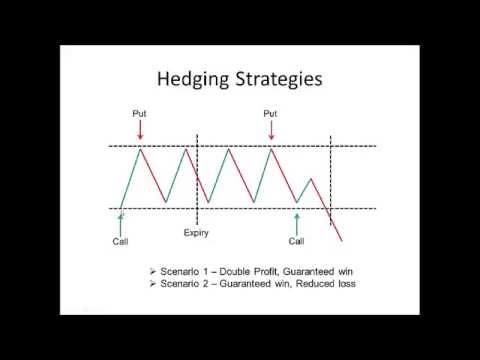Content

AED is always positive, meaning that the demand always increases with increase in advertising expenditure. Companies that sell goods or services with a high PED may find it challenging to increase sales simply by raising their advertising expenditures. In such cases, trying to achieve a positive AED may be ineffective if the company doesn’t address the high price point driving consumers away. Where EQ, P represents the own price elasticity of demand for the firm’s product, EQ,A is the advertising elasticity of demand for the firm’s product, and A represents the firm’s expenditures on advertising.
Assuming the information from Madison Avenue is correct, should you increase or decrease your firm’s level of advertising? In the formula, the symbol Q0 represents the initial demand or quantity purchased that exists when spending on advertising equals A0. The symbol Q1 represents the new demand that exists when advertising expenditures change to A1. On the contrary, once the product is well-established in the market, the aim behind advertising is to attract new customers and create additional demand. In this case, the advertisement expenditure increases while an increase in demand is less. For example, in a sector where all competitors advertise at the same level, additional advertising may not have a direct effect on sales.
The Impact of Creative Strategy on Advertising Elasticity
As with all elasticity values, the larger the number, the more responsive the good’s demand is to a change in advertising. The following table shows the summary of degrees or types of advertisement elasticity of demand. If the pizza outlet spends money on promotion of an existing variant of Pizza, then the demand of that Pizza can increase and stay at that level even after the promotions are over.
When a product is newly introduced in the market, then the advertisement elasticity of sales is greater than unity. This implies that advertisement elasticity of sales decreases with increase in the sales of a product. The main objective of advertising is to promote the sales of an organization by increasing the demand for products.
The Pet Exposure Effect: Exploring the Differential Impact of Dogs Versus Cats on Consumer Mindsets
However, this ratio should be used with caution as an indicator of advertising success because many variables can affect a marketing campaign’s success. Thus, the advertising elasticity of demand equals 0.3 which means that the company’s demand is not as responsive to advertising as its peer group. Apart from aforementioned factors, advertisement elasticity of sales is also influenced by some other factors, such as change in the price of a product, consumer’s income, and number of substitutes. Your vending machine company starts a new ad campaign, “Vend for Yourself.” Currently, your company sells soft drinks at $1.50 per bottle, and at that price, customers purchase 2,000 bottles per week. After a month, you’re spending $500 per week on advertising and, without changing the price of soft drinks, sales have increased to 3,000 bottles per week.

Sales may go up or down after advertising, but this does not necessarily mean that demand has changed because demand is not measured in how much of something is sold. In order to continue enjoying our site, we ask that you confirm your identity as a human. The content on MBA Skool has been created for educational & academic purpose only. The Management Dictionary covers over 1800 business concepts from 5 categories.
While advertising elasticity of demand measures how advertising impacts the demand for products or services, price elasticity of demand (PED) measures how a change in price impacts demand. Demand response to price fluctuations can be deemed elastic or inelastic depending on consumer reaction to the changing prices. When the percentage change in quantity demand of a commodity is less than the percentage change in advertisement expenditure of the business firm then it is relatively inelastic demand resulted from the advertisement.
This article describes the concept and degree of advertisement elasticity of demand. The price elasticity of demand is low or inelastic (that is, it doesn’t change). Goods that are basics required for survival, such as food or prescription drugs, are examples of products with low or inelastic demand. Last year, your company spent $2 million on advertisements to inform customers about its “no hassle” policy, and had overall sales revenue of $40million.
Advertising Elasticity of Demand (AED)
In addition, the elasticity would also be higher if the advertisement of an organization is superior to the advertisement of its competitors in present. Suppose the sales promotion expenditure of an organization increases from Rs. 20,000 to Rs. 60,000. Consequently, the sales of the organization increases from 40,000 units to 60,000 units. Over the last six decades, marketing concepts, tools, and knowledge have gone through tremendous developments. A general trend toward formalization has affected orientation and decision making and has clarified the relationship between marketing efforts and performance measures.
- Consumers will shift their purchases to substitute products with a lower price point, or they may go without the product entirely.
- In addition, the elasticity would also be higher if the advertisement of an organization is superior to the advertisement of its competitors in present.
- Advertising Elasticity of Demand (AED) is a measure of effectiveness of increase in expenditure of advertising in increasing demand of a product.
- This will often be the case with optional or discretionary purchases that consumers can do without.
- This does not necessarily reflect an increase in its price elasticity of demand because price elasticity represents a change in demand with an increase in price.
Advertising elasticity measures this relationship between promotion and sales, with a low number signifying a lack of relationship between advertising and demand. You’ll need access to several periods of quantity demanded and advertising expenses. Most people will not have this information available as advertising expenses are generally listed under operating expenses on an income statement, and the quantity of a product demanded is tough to obtain.
(Hindi) Forms of Market
Advertising comprises oral and visual messages that are aimed at informing customers about the availability of a product and influencing them to purchase the product. Dummies has always stood for taking on complex concepts and making them easy to understand. Dummies helps everyone be more knowledgeable and confident in applying what they know. Whether it’s to pass that big test, qualify for that big promotion or even master that cooking technique; people who rely on dummies, rely on it to learn the critical skills and relevant information necessary for success.
Beer has an industry-wide elasticity of 0.0, which means that advertising has little influence on profits. It helps in determining the optimum level of expenditure on advertisement of an organization. Advertisement elasticity of sales plays a crucial role in determining advertisement expenditure when there are restrictions by government on the cost of advertisement or there is high competition in the market.
- It implies that the sales of an organization increases with increase in advertisement expenditure.
- It means a certain percentage change in the promotional expenditure by the business firm brings a change in sales volume by a lower percentage then it is the case of advertisement elasticity of demand less than one.
- Suppose the sales promotion expenditure of an organization increases from Rs. 20,000 to Rs. 60,000.
- Refers to the fact that advertisement elasticity of sales would be higher if the quality of advertisement of a product is superior to the past.
- As with all elasticity values, the larger the number, the more responsive the good’s demand is to a change in advertising.
- Beer has an industry-wide elasticity of 0.0, which means that advertising has little influence on profits.
Conversely, a price increase will result in lower consumer demand if a product has a high PED. As a result, consumers will shift their purchases to substitute products with a lower price point, or they may go without the product entirely. This will often be the case with optional or discretionary purchases that consumers can do without. Refers to the fact that advertisement elasticity of sales would be higher if the quality of advertisement of a product is superior to the past.
AED vs. Price Elasticity of Demand (PED)
On the other hand, advertising for a luxury item—such as an expensive car or piece of jewelry—may not see a payback for some time because the good is costly and is less likely to be purchased on a whim. The numerical value of advertisement elasticity of sales ranges from zero to infinity. Let us understand the concept of advertisement elasticity of sales with the help of an example. Similarly, ∆A is the difference between the new advertisement cost (A1) and initial advertisement cost (A).

Advertising elasticity is a measure of an advertising campaign’s effectiveness in generating new sales. A positive advertising elasticity indicates that an increase in advertising leads to a rise in demand for the advertised good or services. The impact that an increase in advertising expenditures has on sales varies by industry. Companies frequently review their advertising-to-sales ratio to measure the effectiveness of their advertising strategies. Advertising elasticity of demand is valuable in that it quantifies the change in demand (expressed as a percentage) by spending on advertising in a given sector. Simply put, it shows how successful a 1% rise in advertising spend is on raising sales in a specific sector when all other factors are the same.
Companies that sell goods or services with a high PED may find it challenging to increase sales simply by increasing their advertising expenditures. In such cases, trying to achieve a positive AED may be ineffective if the company doesn’t first address the high price point that is driving consumers away. advertising elasticity of Demand (AED) is a measure of effectiveness of increase in expenditure of advertising in increasing demand of a product.
Advertising Elasticity of Demand
The advertisement expenditure has a direct effect on the demand for goods and services. An increase in advertisement expenditure leads to an increase in the sale of a commodity. As advertisement has a saturation point, sales quantity increases up to a saturation point, and then it declines even if advertisement expenditure has increased by the businesses. The effect of advertisement expenditure by the firm on the demand for their product can be measured by advertisement elasticity of demand.